-
 Bitcoin
Bitcoin $106,754.6083
1.33% -
 Ethereum
Ethereum $2,625.8249
3.80% -
 Tether USDt
Tether USDt $1.0001
-0.03% -
 XRP
XRP $2.1891
1.67% -
 BNB
BNB $654.5220
0.66% -
 Solana
Solana $156.9428
7.28% -
 USDC
USDC $0.9998
0.00% -
 Dogecoin
Dogecoin $0.1780
1.14% -
 TRON
TRON $0.2706
-0.16% -
 Cardano
Cardano $0.6470
2.77% -
 Hyperliquid
Hyperliquid $44.6467
10.24% -
 Sui
Sui $3.1128
3.86% -
 Bitcoin Cash
Bitcoin Cash $455.7646
3.00% -
 Chainlink
Chainlink $13.6858
4.08% -
 UNUS SED LEO
UNUS SED LEO $9.2682
0.21% -
 Avalanche
Avalanche $19.7433
3.79% -
 Stellar
Stellar $0.2616
1.64% -
 Toncoin
Toncoin $3.0222
2.19% -
 Shiba Inu
Shiba Inu $0.0...01220
1.49% -
 Hedera
Hedera $0.1580
2.75% -
 Litecoin
Litecoin $87.4964
2.29% -
 Polkadot
Polkadot $3.8958
3.05% -
 Ethena USDe
Ethena USDe $1.0000
-0.04% -
 Monero
Monero $317.2263
0.26% -
 Bitget Token
Bitget Token $4.5985
1.68% -
 Dai
Dai $0.9999
0.00% -
 Pepe
Pepe $0.0...01140
2.44% -
 Uniswap
Uniswap $7.6065
5.29% -
 Pi
Pi $0.6042
-2.00% -
 Aave
Aave $289.6343
6.02%
What does the divergence of the three entangled Alligator lines indicate?
The Alligator indicator uses three shifted moving averages—Jaw, Teeth, and Lips—to spot trends through divergence, signaling potential buy or sell opportunities when lines separate after consolidation.
Jun 19, 2025 at 03:35 pm
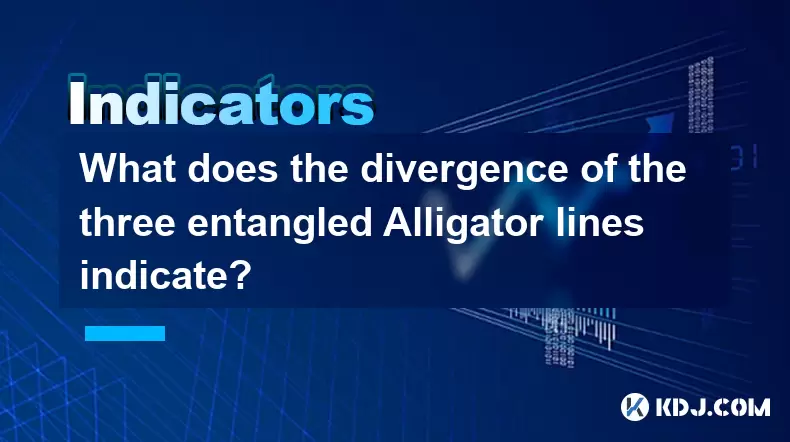
Understanding the Alligator Indicator
The Alligator indicator, developed by Bill Williams, is a technical analysis tool used to identify market trends and potential reversal points. It consists of three moving averages, each offset into the future, which are often referred to as the Jaw, Teeth, and Lips of the Alligator. These lines are typically plotted using smoothed moving averages with specific time periods and shifts.
- Jaw (13-period Smoothed Moving Average, shifted 8 periods forward)
- Teeth (8-period Smoothed Moving Average, shifted 5 periods forward)
- Lips (5-period Smoothed Moving Average, shifted 3 periods forward)
When these lines are close together or even overlapping, it indicates that the market is in a consolidation phase, and the Alligator is "sleeping." When the lines begin to diverge, it signals that the Alligator is waking up and a trend may be forming.
What Does Divergence Mean in This Context?
In the context of the Alligator indicator, divergence refers to the separation or widening gap between the Jaw, Teeth, and Lips lines on the price chart. This divergence is significant because it reflects a change in momentum and suggests that a new trend might be emerging. The direction of the divergence—whether upward or downward—can indicate the potential direction of the upcoming trend.
- A positive divergence, where the Lips move above the Teeth and Jaw, may suggest an uptrend.
- A negative divergence, where the Lips drop below the Teeth and Jaw, could signal a downtrend.
This visual separation allows traders to anticipate entry or exit points based on the behavior of the Alligator lines.
How to Interpret Divergence Between the Three Lines
When all three lines start to diverge, it is crucial to observe their order:
- If the Lips line crosses above the Teeth and Jaw, and all lines are trending upwards, this can be interpreted as a strong buy signal.
- Conversely, if the Lips line crosses below both the Teeth and Jaw, and they all point downward, it may serve as a sell signal.
Traders should also pay attention to how far apart the lines are from one another. A wider divergence generally indicates a stronger trend. However, overextended divergence can also signal that the current trend is losing momentum and may soon reverse or consolidate.
It's important to cross-reference this information with other indicators or price action strategies to confirm the validity of the trend.
Trading Strategies Based on Alligator Line Divergence
Using the Alligator's divergence effectively involves combining it with other elements of technical analysis. Here’s how you can incorporate it into your trading strategy:
- Look for divergence after a period of convergence: Wait until the Alligator lines have been tightly grouped and then start to separate. This often marks the beginning of a new trend.
- Combine with candlestick patterns: Confirm the divergence signal by checking for bullish or bearish candlestick formations at key support or resistance levels.
- Use oscillators like RSI or MACD: These tools can help validate whether the market is overbought or oversold, reinforcing the Alligator's indication of trend strength.
- Set stop-loss and take-profit levels: Once a trade is entered based on divergence, define risk parameters to manage exposure effectively.
Remember, no single indicator should be used in isolation. The Alligator works best when part of a comprehensive trading system.
Common Misinterpretations and Pitfalls
Despite its usefulness, many traders misinterpret the Alligator lines' divergence due to common pitfalls:
- Overtrading during consolidation phases: Entering trades when the Alligator is still "asleep" can lead to false signals and losses.
- Ignoring market context: Failing to consider broader market conditions or news events can cause divergence signals to fail.
- Misjudging the trend strength: Just because the lines diverge doesn't always mean a strong trend will follow. Sometimes the divergence is shallow and quickly reverses.
- Not adjusting settings: The default Alligator settings work well in many cases, but some markets or timeframes may require adjustments to optimize performance.
Avoiding these mistakes requires discipline, patience, and backtesting to understand how the Alligator behaves under different market scenarios.
Practical Example Using Cryptocurrency Charts
Let’s examine a real-world example using a cryptocurrency chart, such as Bitcoin or Ethereum:
- Identify a period where the Alligator lines are closely entangled, indicating consolidation.
- Watch for the moment when the Lips line begins to move away from the Teeth and Jaw.
- Observe whether the price follows suit—rising along with the divergence for a bullish signal or falling for a bearish one.
- Check volume data to see if there is increased participation supporting the new trend.
- Place a trade once confirmation comes through additional indicators or candlestick patterns.
For instance, during a breakout from a consolidation phase on a 4-hour BTC/USDT chart, the Alligator lines may show clear divergence with the Lips rising above the others. Simultaneously, the Relative Strength Index (RSI) moves out of neutral territory, confirming the bullish shift.
Frequently Asked Questions
Q: Can the Alligator indicator be used on any time frame?
Yes, the Alligator can be applied across multiple time frames. However, longer time frames tend to provide more reliable signals due to reduced noise and volatility.
Q: What should I do if the Alligator lines diverge but the price doesn’t follow?
This could indicate a false signal or weak momentum. In such cases, it's advisable to wait for additional confirmation before entering a trade.
Q: Is it possible to customize the Alligator settings for crypto trading?
Absolutely. While the default settings are effective, traders often adjust them to better suit the high volatility and 24/7 nature of cryptocurrency markets.
Q: How does the Alligator differ from traditional moving averages?
Unlike standard moving averages that lag behind price, the Alligator lines are shifted forward, offering a unique perspective on potential trend development.
Disclaimer:info@kdj.com
The information provided is not trading advice. kdj.com does not assume any responsibility for any investments made based on the information provided in this article. Cryptocurrencies are highly volatile and it is highly recommended that you invest with caution after thorough research!
If you believe that the content used on this website infringes your copyright, please contact us immediately (info@kdj.com) and we will delete it promptly.
- BAY Miner & XY Miners: Unlock Daily Earnings with BTC, DOGE, and LTC Cloud Mining
- 2025-06-20 10:25:12
- Decoding the Aaluxx Myth: Maya Protocol and the Smart Economy
- 2025-06-20 10:30:12
- Binance Wallet, Exclusive Token, Launch: What You Need to Know
- 2025-06-20 10:45:12
- Semler Scientific's Bitcoin Bet: Bold Move or Risky Gamble?
- 2025-06-20 10:50:12
- SHIB Eyes on Whale Activity and Shibarium Upgrade: Will It Trigger a Reversal?
- 2025-06-20 10:50:12
- Crypto Bull Run Expert Prediction: Navigating the Generational Surge
- 2025-06-20 08:25:12
Related knowledge
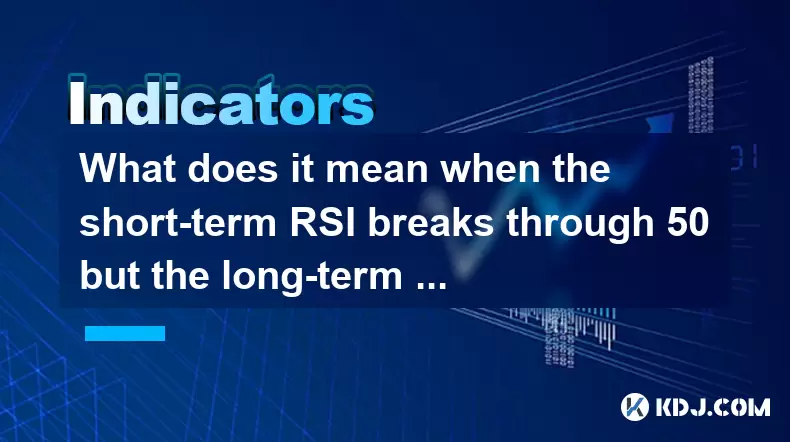
What does it mean when the short-term RSI breaks through 50 but the long-term RSI does not move in the RSI indicator?
Jun 20,2025 at 10:42am
Understanding the RSI Indicator and Its Dual-Term ApplicationThe Relative Strength Index (RSI) is a widely used momentum oscillator in technical analysis, primarily for identifying overbought or oversold conditions in an asset’s price movement. It typically operates on a scale from 0 to 100, with levels above 70 considered overbought and below 30 consid...
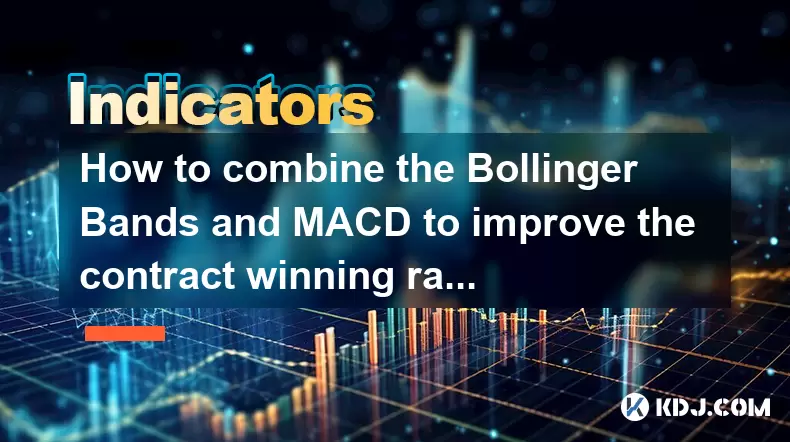
How to combine the Bollinger Bands and MACD to improve the contract winning rate?
Jun 19,2025 at 06:35pm
Understanding Bollinger Bands and MACD IndicatorsTo effectively combine Bollinger Bands and the MACD (Moving Average Convergence Divergence), it's essential to first understand what each indicator represents. Bollinger Bands consist of a middle moving average line and two outer bands that adjust based on market volatility. When prices move toward the up...
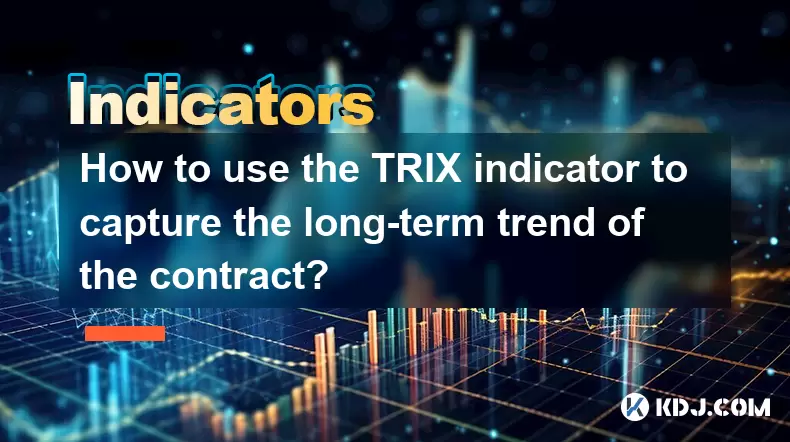
How to use the TRIX indicator to capture the long-term trend of the contract?
Jun 20,2025 at 09:14am
What Is the TRIX Indicator?The TRIX (Triple Exponential Average) indicator is a momentum oscillator used to identify oversold and overbought conditions, as well as potential trend reversals in financial markets. It is calculated by applying a triple exponential moving average to price data and then taking the percentage rate of change of that smoothed v...

How does the long lower shadow of the K line indicate the formation of the bottom of the contract?
Jun 19,2025 at 05:00am
Understanding the Long Lower Shadow in K-Line AnalysisIn cryptocurrency trading, K-line analysis plays a pivotal role in determining market sentiment and potential price reversals. A long lower shadow, also known as a long wick, is one of the most telling candlestick patterns that traders look for when assessing whether a bottom might be forming in a co...
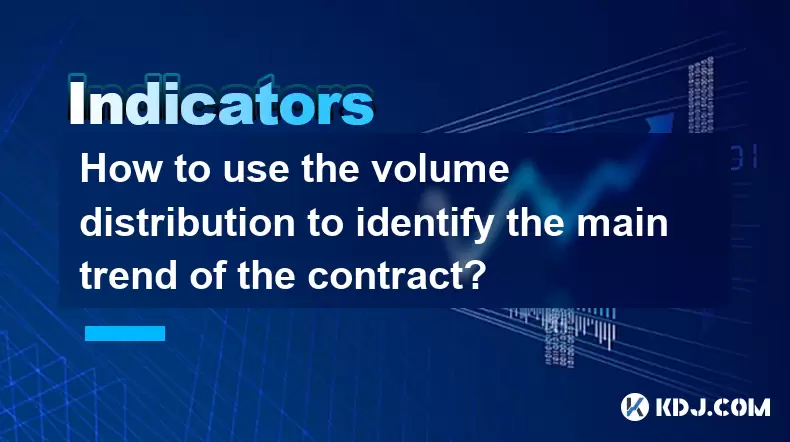
How to use the volume distribution to identify the main trend of the contract?
Jun 20,2025 at 03:56am
Understanding Volume Distribution in Cryptocurrency ContractsIn the realm of cryptocurrency trading, particularly within futures and perpetual contracts, volume distribution plays a pivotal role in deciphering market sentiment. Unlike spot markets, contract trading involves leveraged positions that can amplify both gains and losses. To navigate this com...
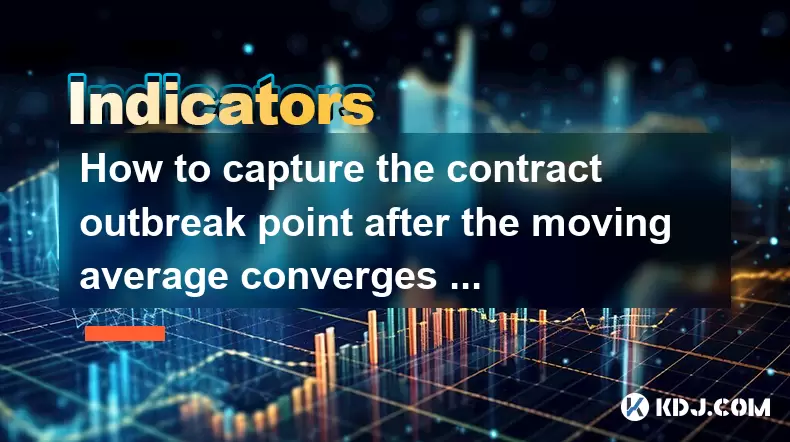
How to capture the contract outbreak point after the moving average converges and diverges?
Jun 19,2025 at 02:07pm
Understanding Moving Average Convergence and Divergence in Crypto TradingIn cryptocurrency trading, moving averages are among the most widely used technical indicators. The concept of convergence and divergence refers to how different moving averages align or separate over time. When short-term and long-term moving averages come together (converge), it ...

What does it mean when the short-term RSI breaks through 50 but the long-term RSI does not move in the RSI indicator?
Jun 20,2025 at 10:42am
Understanding the RSI Indicator and Its Dual-Term ApplicationThe Relative Strength Index (RSI) is a widely used momentum oscillator in technical analysis, primarily for identifying overbought or oversold conditions in an asset’s price movement. It typically operates on a scale from 0 to 100, with levels above 70 considered overbought and below 30 consid...

How to combine the Bollinger Bands and MACD to improve the contract winning rate?
Jun 19,2025 at 06:35pm
Understanding Bollinger Bands and MACD IndicatorsTo effectively combine Bollinger Bands and the MACD (Moving Average Convergence Divergence), it's essential to first understand what each indicator represents. Bollinger Bands consist of a middle moving average line and two outer bands that adjust based on market volatility. When prices move toward the up...

How to use the TRIX indicator to capture the long-term trend of the contract?
Jun 20,2025 at 09:14am
What Is the TRIX Indicator?The TRIX (Triple Exponential Average) indicator is a momentum oscillator used to identify oversold and overbought conditions, as well as potential trend reversals in financial markets. It is calculated by applying a triple exponential moving average to price data and then taking the percentage rate of change of that smoothed v...

How does the long lower shadow of the K line indicate the formation of the bottom of the contract?
Jun 19,2025 at 05:00am
Understanding the Long Lower Shadow in K-Line AnalysisIn cryptocurrency trading, K-line analysis plays a pivotal role in determining market sentiment and potential price reversals. A long lower shadow, also known as a long wick, is one of the most telling candlestick patterns that traders look for when assessing whether a bottom might be forming in a co...

How to use the volume distribution to identify the main trend of the contract?
Jun 20,2025 at 03:56am
Understanding Volume Distribution in Cryptocurrency ContractsIn the realm of cryptocurrency trading, particularly within futures and perpetual contracts, volume distribution plays a pivotal role in deciphering market sentiment. Unlike spot markets, contract trading involves leveraged positions that can amplify both gains and losses. To navigate this com...

How to capture the contract outbreak point after the moving average converges and diverges?
Jun 19,2025 at 02:07pm
Understanding Moving Average Convergence and Divergence in Crypto TradingIn cryptocurrency trading, moving averages are among the most widely used technical indicators. The concept of convergence and divergence refers to how different moving averages align or separate over time. When short-term and long-term moving averages come together (converge), it ...
See all articles

























































































